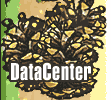Land that presently is known as Scotland Center was considered part of Windham in 1700 when it was purchased by Isaac Magoon, a land speculator who named the area Scotland after his native land. Settlement of area began gradually. In 1706 a highway was laid out and privilege was granted to build a grist mill. A year later, Windham allowed the daughter town to lay out a burying ground, although those living in Scotland continued to attend church in Windham Center and attend town meetings there at least once every year.
In the center of the green is an octagonal frame bandstand with a conical roof creating a focal point. Donated by the Scotland Garden Club, it is surrounded by shrubs. Shrubs also surround two war memorials. The Vietnam memorial is a rough-squared granite block with a bronze plaque. Near it is the World War Two memorial, a large boulder with a bronze plaque.
Institutional buildings dominate the streetscape. Particularly noticeable is the Congregational Church (1842) and the Chapel (1842, originally constructed as the Town Hall) at the northwest corner of the green across Route 14. Located side by side and close to the street, these Greek Revival structures contribute to the classic image of a New England town green. However, to the east of the church and set way back from the street with an asphalt parking lot in front is St. Margaret's Church built c. 1960. While the juxtaposition of the two churches is interesting, the deep setback and the contemporary style of St. Margaret's detracts from the green's classic image.
Another institutional building that stands out is the Scotland Town Hall (1896) at the southern tip of the green across Route 97. It was originally built as the Scotland Consolidated School on the site of Centre District School with space for the town hall and library on the second floor. The fire department located just to the west of the Congregational Church chapel is also noticeable primarily because it is in a new building or one that has been substantially altered to serve as the firehouse.
The remainder of the buildings around the green are residential properties, although some of them have been converted to commercial use. They range from c. 1750 to c. 1920 but most of them date from the last half of the 19th century. One once served as a store and another a tavern. The present local grocery store is located in a converted residence built c. 1890 just east of the green on the north side of Route 14. A carriage house built c. 1800 and converted to a car repair garage is located behind what amounts to a vacant lot bordering the northeast corner of the green. Some of the cars waiting repair are noticeable from the green and detract from its tranquil nature.
There is a sense that the buildings are clustered around the green and relate to it, but because the setback from the street varies considerably from building to building (particularly along the north and northeast side) as does the distance between them, there is not a feeling that the green is enclosed by the buildings. However, what does exist is a sense of community and a clear statement of the evolution of the town center from its beginnings to the present day.






![]()